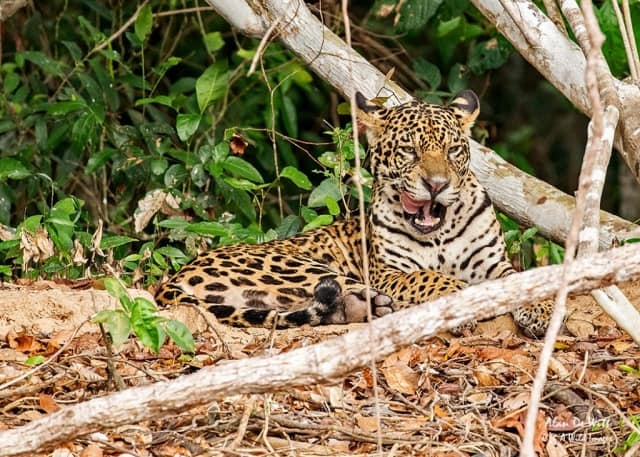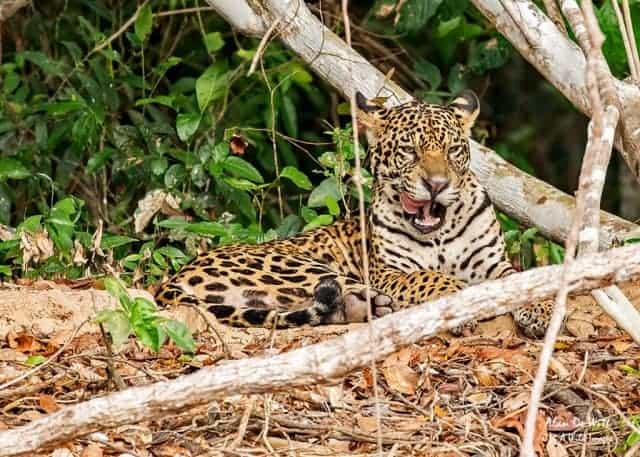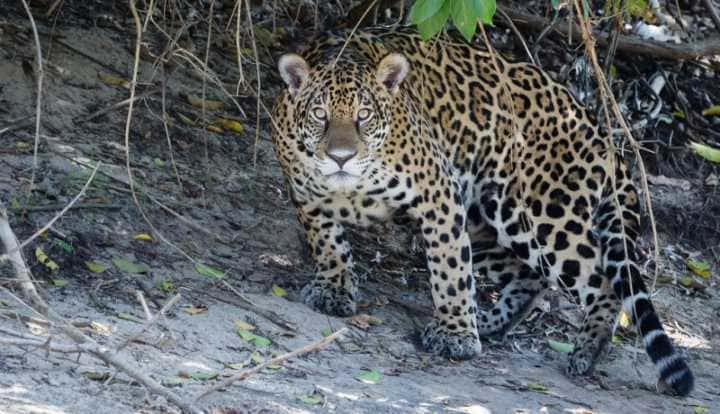Brazil’s Pantanal has over the past few years become the place to see the majestic Jaguar. What appeared to be a very elusive creature, seems to have become more accepting of humans. On a recent trip, traveling from the UK with Naturetrek, we were hoping that we might see one.
We were staying for three days on the Cuiaba River and its tributaries the Rio Tres Irmaos. Naturetrek had had 100% success rate of spotting jaguars on all their tours to this area so we were hopeful. Our visit to the Pantanal took place just at the start of the wet season.
We arrived at Porto Jofre on the Cuiaba River and then traveled by speedboat for 13km upstream to the Southwild Jaguar Flotel, a floating hotel. Over the three days traveling around the river systems our total Jaguar count reached 14 sightings of 8individual Jaguars. It may have been that at the time we visited we were very lucky with 100% successful sightings on each trip out.

For the tourist visiting the area the flotel acts primarily as an accommodation platform. However, like on a number of the Flotels along the river, on board there was a researcher monitoring and mapping Jaguar sightings and their behaviour.
Jaguars all have individual markings making identifying easier. The researchers at Southwild had over time built up a photographic record of the individuals. Thankfully these images enabled our group to recognise the individuals seen and helped in putting together a diary of our trip.
Details of which plus the other wildlife of the area can be found on our Pantanal Diary– Click Here
8 individual Jaguars named by Southwild :-
-
Tore – young male
-
Kim – young male and brother to Tore
-
Ginger – female noted for her amber eyes
-
Geoff – old male
-
Patrica– female
-
Olympia -female
-
Balam – male
-
Hunter -female





Alan De Witt
After spending a career that demanded much of my time and energy. I'm now retired and finally found some time to pursue an interest in wildlife and photography as well as putting together a website C & A's Wild Images.
I now live in Norfolk, an ideal location in the UK to see wildlife and over the years have also had the opportunity to visit and spend time using the camera in interesting and sometimes remote parts of the world. I first became interested in trying to capture wildlife images when I left university in the days of slide film. Initially I used two compact cameras with 20+ zooms but now have moved to a professional Canon SLR set-up.





Leave a Reply